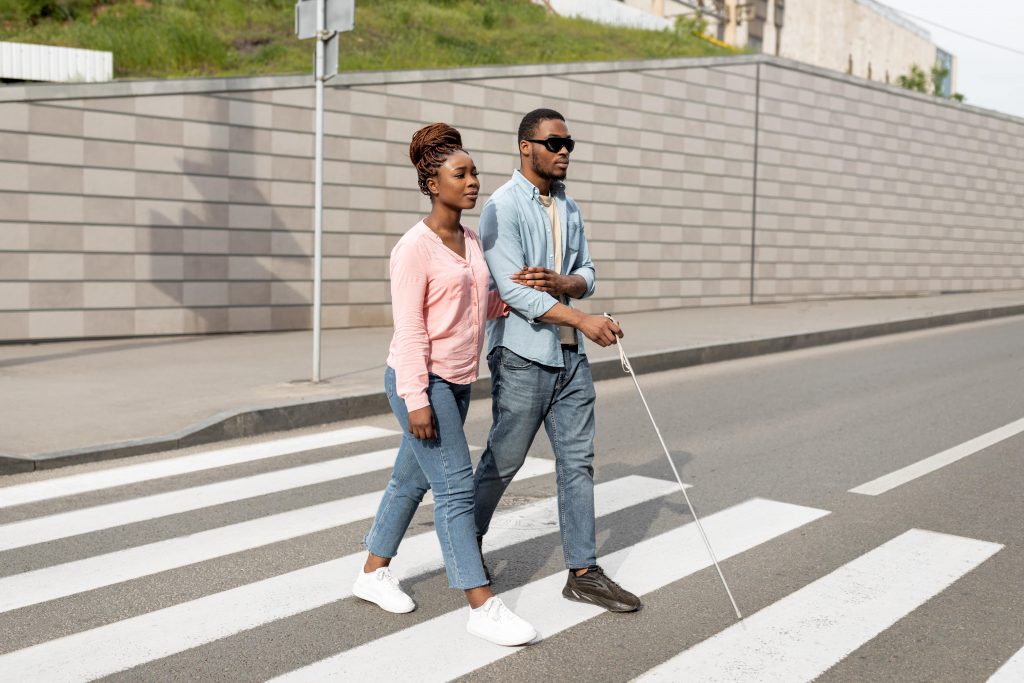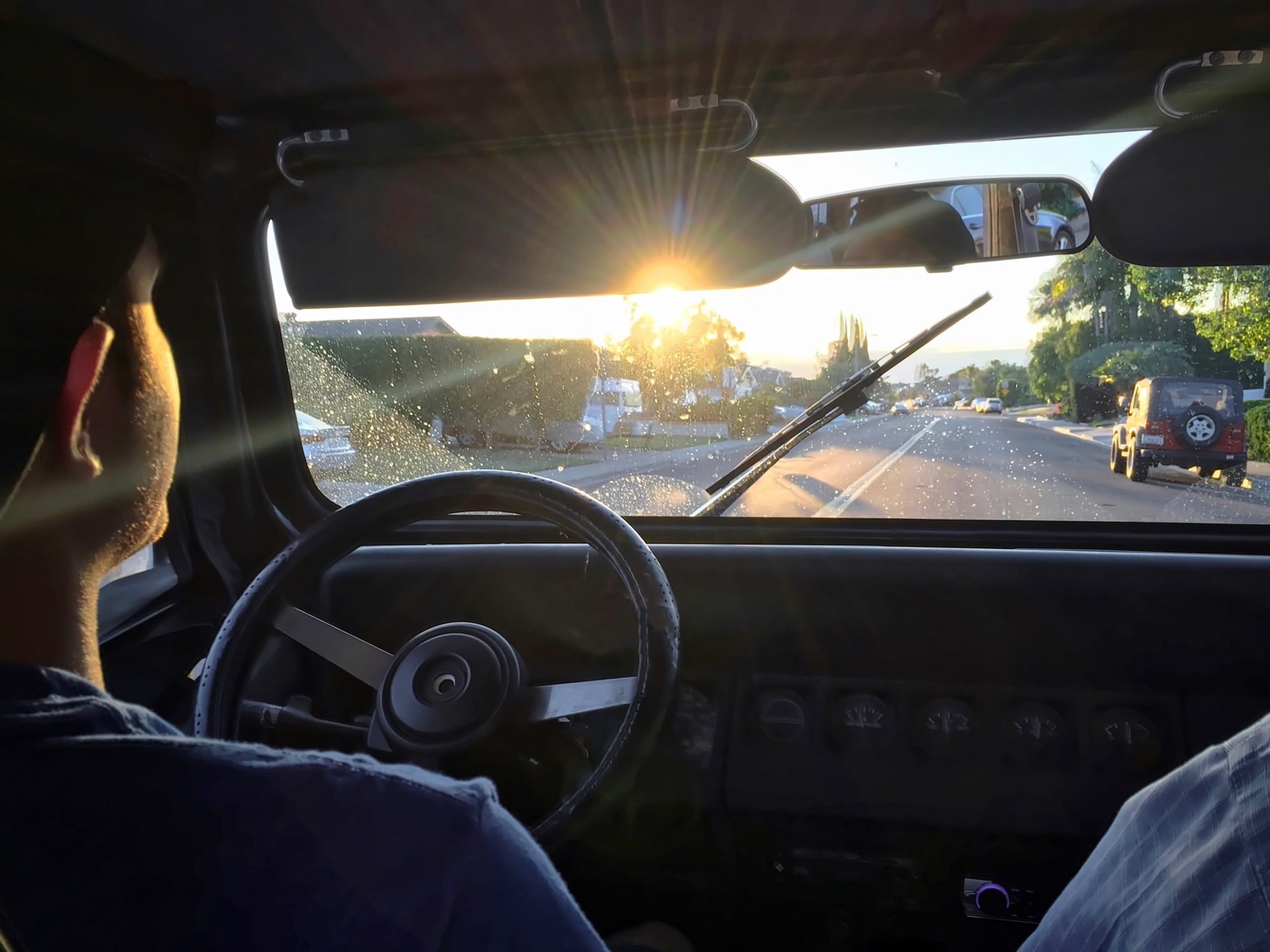There are many people in this world who have lost some of their peripheral vision due to glaucoma, diabetes, an accident, or another unfortunate event. And even though they may be able to continue driving with 20/20 eyesight in both eyes, there is still the possibility that they might lose the ability to drive due to peripheral vision loss.
What is peripheral vision loss and why should you care about it?
Peripheral vision loss is a condition that affects the side vision of a person. This can make it difficult for them to see things that are happening in their peripheral vision. As a result, they may find it hard to drive, read, or do other activities that require good peripheral vision.
The impact of peripheral vision loss on driving
How driving is affected by loss of peripheral vision:
A driver’s eyes and attention might be directly forward through the windshield. This is often referred to as foveal focus. It is the part of the eye with the best visual acuity and has the ability to direct attention to objects accurately. It generally encompasses only a smaller portion of the visual field. Non-foveal vision, on the other hand, generally encompasses a much larger part of the visual field. This is the part of the visual field within which it is very difficult to direct attention accurately. Most people rely on this non-foveal visual field to detect and recognize objects. When this part of the visual field is damaged or impaired in any way, driving ability can be severely restricted.
Why do people lose their peripheral vision in the first place?
There are several reasons why someone might lose their peripheral vision. Aging, diabetes, and accidents are some of the most common causes. When this happens, it can be difficult for the person to continue living their life as usual. They may have to give up driving or reading, activities that they may have enjoyed for many years. Other types of vision loss may make it difficult for a person to drive safely. However, those with peripheral vision loss can still continue driving as long as they meet certain requirements and pass tests.
Generally, peripheral vision loss occurs as a result of an eye condition or ailment. One of the most common causes is cataracts, which are often referred to as “cloudy lenses.” Cataracts can also cause nearsightedness and astigmatism.
There are many symptoms of cataracts that can be identified with simple testing that can be done in an ophthalmologist’s office, such as blurred vision, double vision, trouble focusing on close objects, symptoms of glare (especially when driving), symptoms of headaches (especially when driving), symptoms of blurry vision (especially at night), symptoms of halos (when looking at bright lights).
Another common cause of peripheral vision loss is glaucoma. Glaucoma is the most common cause of peripheral vision loss. Glaucoma is a condition that causes damage to the optic nerve. As a result, those with glaucoma can experience gradual vision loss in their peripheral vision.
There are no early warning signs for glaucoma and by the time it is diagnosed, some permanent vision loss has already occurred. However, if caught and treated early, glaucoma can be controlled and vision loss can be minimized.
There are a few things those with glaucoma can do to help them stay safe when driving:
- Make sure to have regular eye exams so that any changes in vision can be detected and treated as soon as possible.
- Keep your prescription updated.
- Wear sunglasses that block both UV and blue light when outside.
- Dim the dashboard lights and use anti-glare driving glasses at night.
- Pull over to the side of the road if you have trouble seeing or feel unsafe driving.
Other Diseases that cause peripheral vision loss and driving difficulties
It is important to remember that peripheral vision loss can occur as a result of many different eye conditions or ailments and that the best way to stay safe while driving is to be aware of the symptoms and take the necessary precautions. If you are experiencing any vision problems, it is best to speak with your optometrist or ophthalmologist to determine the cause and get the appropriate treatment.
There are a few different eye diseases that can cause peripheral vision loss and driving difficulties. One of the most common is retinitis pigmentosa, which affects around 1 in 4,000 people in the United States. This disease causes the retina to deteriorate, which can lead to a loss of peripheral vision. Retinitis pigmentosa usually starts with a loss of night vision and then spreads to the peripheral vision. Driving with peripheral vision loss from RP can be dangerous, as you may not see other cars or obstacles on the side of the road. RP causes tunnel vision and can make driving very difficult especially at night.
Another common eye disease that can cause peripheral vision loss is retinal detachment. This occurs when the retina separates from the back of the eye. Symptoms include sudden flashes of light, floaters, and a decrease in vision. If left untreated, retinal detachment can lead to permanent vision loss.
Risks of Driving with Peripheral Vision Loss
Some risk associated with driving with reduced peripheral vision is that you may not be able to see pedestrians or cyclists who are walking or riding near the side of the road. You also may not be able to see when they are about to cross the street, which could lead to a collision.
If you are experiencing any of the following symptoms, it is best to speak with your ophthalmologist or optometrist to determine how your peripheral vision loss could affect your ability to drive. These symptoms include: difficulties seeing at night, difficulty judging the speed or distance of oncoming objects while driving, unexpected events that occur around the sides of the road, and blurred vision.
If you are told that you should not drive because of your peripheral vision loss, there are a few things that you can do to stay safe while on the road. You may want to consider using public transportation or asking a friend or family member to give you a ride. If that is not possible, then you can try to limit your driving to daylight hours or familiar routes that you know well. You may also want to avoid changing lanes often especially if the area is unfamiliar. If you are taking any medications, ask your doctor about any possible side effects they may have on your vision and driving abilities.
Are there peripheral vision loss driving waivers?
There are a few ways to get a waiver for someone with peripheral vision loss. One way is to go through your state’s department of motor vehicles (DMV). The DMV will require you to provide some documentation, such as a doctor’s note, stating that you have peripheral vision loss and how it affects your ability to drive. You may also need to take a driving test to show that you are still able to safely operate a vehicle. This may also require the presence of a third party to act as a monitor, so it’s important to check with your DMV before you go. Every state has different rules for driving with peripheral vision loss so it’s important to educate yourself and know the laws in your state.
Glaucoma affects about 2% of Americans over 40 years old and can cause peripheral vision loss in varying degrees. The degree to which this affects driving is up for debate. Some argue that people with glaucoma should not drive at all , whereas others – including an organization known as the Glaucoma Research Foundation – say that it would be a person’s peripheral vision loss, not their central vision loss, that should impact whether or not they can operate a vehicle.
How to make sure they are still safe on the road?
If you are someone who has been diagnosed with glaucoma, it’s important to make sure you are still safe on the road. First, be sure to get a waiver from your state’s DMV if you need one. Next, make sure to keep your driving skills up-to-date by practicing in a safe environment. You can also try using adaptive driving equipment, such as blind spot mirrors or visors, to help you see the road better. It’s also important to stay aware of your surroundings and be prepared for anything that could happen while you’re driving.
Some other helpful hints to stay safe:
- Driving can be restricted to daylight hours when there is more visibility.
- If driving in the dark, using high-beam headlights can help the driver see further down the road.
- Wearing sunglasses or tinted lenses may also help while driving during the day.
- It may be necessary to consult a specialist.
- Driving can become more dangerous if the driver has a cataract or other type of eye disease that causes peripheral vision loss. If this is the case, they should have a professional test their driving abilities and tell them whether they are safe to drive anymore.
Tips for drivers with peripheral vision loss
Advice for drivers who have lost peripheral vision:
If you have lost some or all of your peripheral vision, you should:
• Check your mirrors often. You will probably need more than the usual number of mirrors. For example, many drivers use wide-angle mirrors to cover the blind spots created by the loss of peripheral vision. That’s the area you can’t see without turning your head from side to side.
• Keep a safe following distance at all times, and be more aware than ever of the vehicles around you.
• The importance of regular eye examinations cannot be overemphasized. You and your doctor should communicate about your visual problems. Also, make sure to tell your passengers if you have any limitations in your peripheral vision. If they know, they can help you.
Adaptive driving techniques for individuals with peripheral vision loss
When individuals lose their peripheral vision, they have to adjust how they drive. There are several tips that can help people drive more safely and comfortably when peripheral vision is lost. Some of these tips include scanning the road more often, using auditory navigation cues, and adjusting the driver’s seat to improve visibility. Some people might also be equipped for special training or given special equipment to make them more comfortable, and safer, as drivers.
Assistive devices for drivers with peripheral vision loss
Drivers who have experienced peripheral vision loss can certainly benefit from assistive devices. Devices such as wide-angle mirrors will allow drivers with peripheral vision loss to detect objects coming from their blind spots. GPS systems have truly come a long way in the past ten years as nearly all of them now offer voice guidance. This means that drivers who have lost visual range on their peripheries will be able to maintain better safety on the road and be able to stay on course better even if they are spatially challenged.
Legal considerations for drivers with peripheral vision loss
Legal considerations for people with peripheral vision loss who drive
The legal requirements for drivers who have lost peripheral vision vary from place to place. Some drivers may be asked to take new vision exams or submit to medical checkups to ensure they’re still fit to drive. However, it’s very important for them to understand and keep on top of any changes in the law.
Resources for drivers with peripheral vision loss
Drivers who have experienced peripheral vision loss have a variety of resources available to them. These resources include both in-person and online support groups, driving rehabilitation programs that assess an individual’s abilities, and often times government or private/charitable funding to assist in fixing or adjusting an automobile to better suit an individual’s personal limitations.
https://www.driverseducationusa.com/resources/the-importance-of-a-good-vision/
https://hadley.edu/welcome-hadley
Safety precautions for drivers with peripheral vision loss
Safety measures for drivers with eye conditions compromising peripheral vision:
Drivers experiencing peripheral vision constraints should take several precautions. These include avoiding distractions, getting regular vision checks, staying current on changes in vision, and adhering to posted speed limits and other traffic regulations. Emphasizing safety, drivers, should be proactive, to reduce risks of accidents.
Common misconceptions about peripheral vision loss and driving
Many people are wrong about problems with peripheral vision and driving:
A big error some make is thinking that ones with decreased peripheral vision cannot safely drive cars. No peripheral vision causes trouble, yes, but there’s a lot you can do to make up for it behind the wheel, like using special mirrors. Are you comfortable using binoculars (bioptic glasses), magnifying glasses, or special apps or devices? Do you have the right stuff to make up for lost peripheral vision? The right car and the right modifications to that car will help you drive. You can hit the road again—and enjoy the freedom, gain the independence, have the pleasure, go as far as you want to go.
In conclusion, patients who have experienced any kind of vision loss are strongly encouraged to seek out a specialist for their peripheral vision capabilities. A quick evaluation can quickly determine if they are safe to drive, or what kind of adaptations would help them become safer drivers. Many patients feel that they don’t want to bother others with their problems, but causing an accident because you cannot see well enough to drive is not only a problem for the driver, but also for those around them. Drivers with peripheral vision loss should take extra precautions when driving, and be especially aware of their surroundings. With a little bit of caution and awareness, you can safely continue to enjoy the freedom that driving provides.
Thank you for reading!














